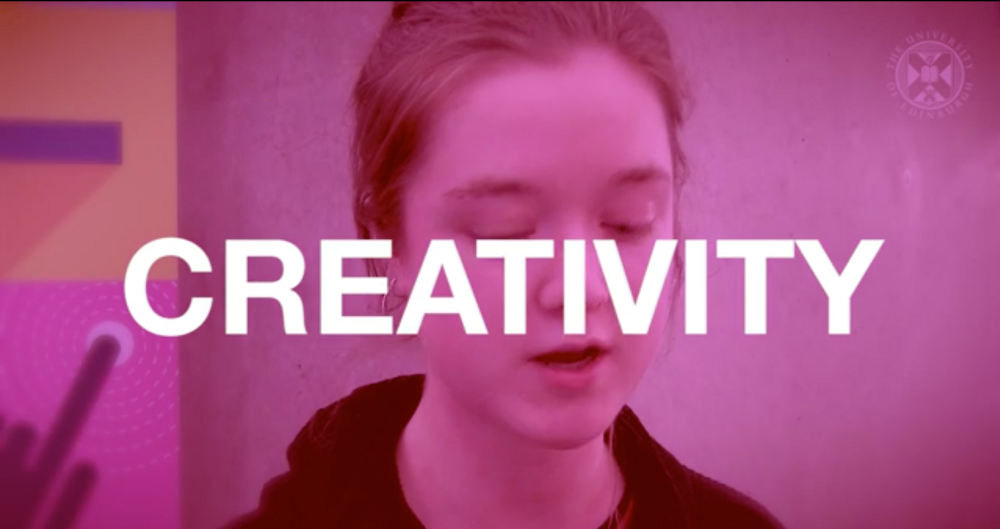
The Near Future Teaching project aims to co-design the future of digital education at Edinburgh, based on the values of the staff and students who work here. Last week we explored the continued importance of a human focus in our teaching and learning, as well as the possibility of using too much technology (or using it without a clear sense of purpose).
In this instalment, we are looking at two other themes emerging from the project: Ways of Learning and Creativity. These two themes are grouped together because they dovetail into one another and emphasise both disciplinary differences and the desire to bring greater creativity to the way we teach and learn.
Ways of Learning
The students and staff speaking in this video discuss the relationship between the physical and the digital, and the ways in which the lived experience of these different modes of teaching can be very different.
There’s differences in the way people learn depending on what group they’re with and what they’re experiencing. So if you’re on the virtual field trip, which we do now, very successfully, it’s a different experience to standing there in a group, and it might be that the experience is it’s raining cats and dogs. And it’s horrible, and you’re clinging together for warmth….But there’s a memory, and the way that memories are stored, they’re different.
– Simon Kelley, Head of School of Geosciences
This field trip scenario is illustrative of the need to resist designing on-campus and online as though they can cover the same curricular or experiential territory, but rather to understand and be nimble in the ways we use each for their specific strengths.
Evie Chamberlain – a postgraduate alumna – describes the potential of online modes to offer new ways to design teaching for the diversity of the student body, linking to some of the strong values-related themes that will be covered in future posts. How might future technologies work to this issue of supporting and working creatively with diversity?
I saw a lot during my masters where we were all coming from different places which was a really positive thing most of the time, because people had different perspectives and they had different work experience or course work experience. But that also meant that everybody had weaknesses that they didn’t even necessarily know about. So finding ways to use technology to catch people up in places that they’re weak and to share knowledge between one another when they are strong in those subjects. I think that would be really fascinating.
Creativity

A plea for more creativity ran throughout the data emerging from the interviews and other Near Future Teaching events. Creativity is described as a route to more playful learning and teaching, an approach which is confident enough to allow for risk and failure:
People can engage with something and feel they’re actually inputting, so it’s not just one way, it’s a two-way sort of process, and then they can learn from that two-way process as well, and I suppose for what we’re talking about as well is having that opportunity to fail and take risks.
– Louise Connelly, Vet School
The desire for creative remixing appears not only to come from disciplines aligned to arts, humanities and social science, but also within the STEM disciplines. One Informatics student, for example, speaks of the value of games and simulations for understanding certain key concepts. Playful learning, gaming, remixes, avoiding reductive assessments, risk, failure, all have potentially quite radical implications for the ways in which we approach teaching across the disciplines.
All the videos from the project can be found here, and are being used directly in the design workshops informing the development of the future vision for digital education. For more about these, please see our blog posts here and here.


